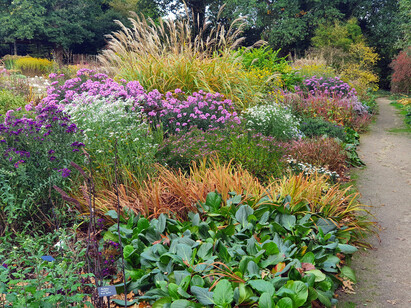
As the nights draw in and temperatures fall, people begin to look forward to the colours of autumn starting to show in the trees around them. But in the borders, herbaceous plants can go out in a blaze of autumn colour too. The following list is selected from plants that thrive in our water garden, woodland and reservoir garden, and so they will need good, fertile soil that has some moisture in the summer months. We would also recommend leaving the fallen spent plant matter on the soil surface where it can decompose naturally and provide shelter for the benefit of overwintering creatures. Large stems can be chopped into smaller pieces or put on a compost heap.
Grasses:
Grasses are often chosen for their winter structure as well as the texture and movement they bring. But although flowers and shape are their main attractions, autumn colour can be an overlooked characteristic.
Molinia caerulea subsp. arundinacea ‘Transparent’ is a cultivar of M. caerulea, a native to Europe, western Asia and north Africa. It starts to send out flower spikes from July, and this cultivar has flower stems that are particularly arching in habit. It reaches 1.8m when in flower, and it’s more rewarding in a border if it’s given plenty of room for these long arching stems to show off. The plumes have a hazy effect, and true to its name, its see-through habit makes it light and airy. In autumn it turns a rich butter-yellow, a colour that lasts through the early winter months, before it collapses in a heap in January.
Molinia in September
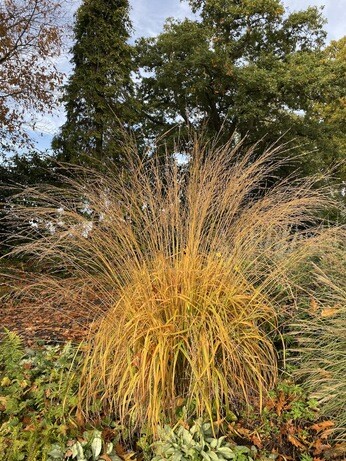
Panicum ‘Squaw' is a cultivar of Panicum virgatum, a grass from the Americas with a wide native distribution. Its common name is switch grass and can be found from Canada through the US to Mexico. This cultivar is a long established compact, upright selection, well behaved and fully hardy in the UK, producing masses of tiny purple flowers in summer. It spreads to about 90cm, and in flower reaches 120cm tall. Can offer a range of autumnal shades in red, orange & yellow. We cut it back ready for new growth in January - February.
The red tips of Panicum virgatum 'Squaw'
Miscanthus sinensis ‘Purple Fall' is quite compact for a Miscanthus sinensis, a grass from East Asia most people will know as a very big, tall, clumping grass with feathery plumes. M. ‘Purple Fall’ is quite a late flowerer, not starting until September. Its feathery plumes reach 1.5m but stand proud from the strappy foliage.. The leaf colours produced in autumn are quite stunning and varied, ranging from red to orange and pink. The colours last well into early winter before eventually bleaching. We cut all our Miscanthus sp. down in late winter before new foliage emerges.
Miscanthus 'Purple Fall'
Plants for generally good soils or improved clay soils, that are in sun or part-shade:
There are plenty of late flowering plants that extend flowering interest well into the autumn, such as asters, rudbekias, Japanese anemones or autumn-flowering bulbs like Cyclamen hederifolium and Crocus sativa. With a foil of autumn foliage in shades of yellow, orange and red around them, their flower colours are set off even more. The following plants do well in similar conditions to many Asteraceae and can make good companions to these late flowerers. But equally it could be argued that although most have finished flowering by autumn, their foliage colours in this season don’t need any accompaniment, and that they can light up a border on their own.
Amsonia ‘Ernst Pagels’ has been growing in our reservoir garden for only a few years and has proven itself to be a great selection. The genus is primarily an American one, and this cultivar might be a hybrid of two that prefer quite free-draining conditions in rocky places such as mountains with reliable rainfall. It has the common name of bluestar, and in summer bears pretty pale blue flowers at the end of long stems, which are covered in whorls of slender green leaves. It eventually forms a large feathery mound about 90m in height and spread, which turns a brilliant yellow for a good period in autumn. It makes a fine companion for aster and grasses at this time of year, acting as a soft foil for other plants.
The light-blue flowers of A. 'Ernst Pagels' in May
Elsholtzia stauntonii also known as the Chinese mint shrub, is an autumn flowering shrub with racemes of soft pink tubular flowers standing upright at the end of each stem. It isn’t an herbaceous perennial but a woody shrub of about 1m or more in height. However, in the UK it’s usually knocked back by winter cold, and so it’s treated like a perennial and cut back in spring. This species originates in China where it grows besides streams and on slopes. It prefers full sun and free-draining soil with regular moisture, but once established it can tolerate dry periods. The flowers are late to emerge, and it’s not fully in flower until the end of September or even the beginning of October. The foliage has a spicy scent when crushed, and as falling temperatures begin to affect the leaves, they start to turn yellow before becoming red, in eye-catching contrast to the pink flowers.
The yellowing leaves of Elsholtzia stauntonii can be seen alongside the red foliage.
Thalictrum aquilegiifolium is a tall, hollow-stemmed perennial with lacy leaves a little similar to those of Aquilegia or the maiden-hair fern. The fluffy flowers are purple or white, held in dense panicles at the top of the plant. It’s native to Europe and Asia, and is found growing in meadows, woodland edges, roadsides and up mountains. It likes moisture, but is tolerant of drier conditions once established, and grows in part shade or sun. Its flowers open from late May, and are visited by a wide range of insects including hoverflies and bees. The fresh green seedheads are attractive too, and tiny field mice have been seen snaffling a few seeds once they’re ripe. The strong stems, about 1.5m tall, hold the leaves horizontally, As the plant turns bright yellow in autumn, it makes a striking and architectural addition to a garden, and can light up a shadier spot.
The glaucous-blue foliage of Thalictrum aquilegiifolium turns bright yellow in autumnHosta ‘Honeybells’ is a green leaved hosta, and as such it’s more able to grow in sun, unlike its variegated or blue-leafed cousins. Having said that, it needs a fair amount of moisture in the soil to compensate. Hosta are Asian in origin, growing in woodland and along river banks. However, some species are found in meadows and mountain slopes, and it’s possibly the garden cultivars with these antecedents that are more tolerant of sun. H. ‘Honeybells’ has the added bonus of tall spikes of white flowers in August, that have a lovely, if elusive scent. Though this hosta has made the list, almost all Hosta die back in shades of yellow, becoming more translucent before eventually collapsing. It’s worth ensuring flower stems are taken as low as possible when or if the plants are deadheaded, as the stems stay quite woody and don’t look quite so pretty in the autumn as the plant dies back.
Hosta foliage dies back in shades of yellow before becoming translucent
Shade plants:
Plants that show good autumn colour in shady situations can light up a gloomy corner or add to the colours in the canopy above.
Polygonatum x hybridum is a robust Solomon’s seal that spreads by rhizomes under the soil. It’s a hybrid between P. multiflorum and P. odoratum which are both UK natives. It flowers in May and June, with little green and white bell-shaped flowers hanging in pairs beneath the curved stems, the ribbed leaves grow horizontally above them like wings. Later, the flowers become round black berries poisonous to humans. We grow various polygonatumspecies in repeated clumps throughout the water garden and woodland, mostly for their arching shape and foliage. However, as the nights turn chilly and the plants start to die back, the leaves and stems turn a glowing butter yellow, and they light up like beacons in the borders. Eventually the leaves fall to the ground, followed closely by the stems, which are then easy to gather up with no cutting back necessary.
In May and June, Polygonatum x hybridum produces white, bell-shaped flowers
The glowing, buttery-yellow foliage in autumn
Aruncus dioicus, also known as goats’ beard, is native to Europe, Asia and North America. Its habitat is stream-side woodland, but once established it can be remarkably tolerant of quite dry, shady areas. Plants are either male or female. While male plants have better flower heads, if you are savvy enough to buy them when the flowers are finished, the females have the added interest of long-lasting attractive seedheads. In damper situations these stately plants can reach 1.5m tall. If you are able, situate them where the flowers are backlit by the sun, showing off the frothy white plumes of flowers. In autumn the leaves turn either a pure yellow or blush yellow and pink. Once the leaves fall, the yellow stems stay upright until cut back.
The white flower plumes of Aruncus dioicus
Lamium orvala is in the nettle family, and looks like a large upright dead-nettle. It’s native to central and eastern Europe and is found in shade where there is some moisture. It forms a rounded or upright clump and in early spring produces pink or white flowers enjoyed by emerging bees. It will self-seed, and if given room, form a colony. Reaching up to 60cm in height in good soil, it tolerates a degree of dryness but will die back early if it remains dry for a prolonged period. In late summer and through autumn, the foliage turns all sorts of autumnal shades of yellow, pink, red, and burgundy, which in a good year lasts for a few months.
The pink flowers of Lamium orvala
Gillenia trifoliata has an upright, airy, mounded shape and a mass of dainty white star-shaped flowers in midsummer, held above its attractive three-part leaves. It naturally grows in rich soil in open woodland across the Eastern half of the US. In UK gardens it likes sun and partial shade and shelter from cold winds when in leaf, though it is in fact a very hardy plant. It needs sufficient moisture in the summer, though once it has established it’s tolerant of drier periods. After the mass of flowers, a few chilly nights reveal red tones in the outer leaves, from deep burgundy to bright orange. The inner parts of the plant turn yellow, giving the overall effect of a lighted fire.
Gillenia trifoliata produces white star-shaped flowers in midsummer
Plants for waterside or bogs:
If you are lucky enough to have a waterside somewhere in your garden, the damp soil around a pond or stream can be a precious place for some wonderful plants with big foliage and super autumn colour.
Darmera peltata ‘Nana’ is a smaller leaved, less aggressive cultivar of an American native which grows along wooded streams in the western half of the US. Like its parent, D. peltata ‘Nana’ has white or pink umbels of flowers in mid spring, though they are shorter than the species, but similarly appear before the leaves have fully emerged at the base. Unlike its bullish parent, the leaves of D. peltata ‘Nana’ turn glorious tones of red and purple which intensify in the chill of autumn. The colours last until the leaves start to fully die back in winter.
The intense autumn colours of D. peltata 'Nana'
Osmunda regalis, known as the royal fern, is native to Europe, Africa and Asia, and grows beside streams or in bogs. Its fronds uncurl vertically, and Beth used them to great effect in the water garden, when in spring they unfurl and reach upwards to the flowering branches of the great white cherry, Prunus ‘Tai-Haku’. Once the fronds are open, the plant can reach nearly 2m in height and will eventually spread to form a huge clump many metres across. The leaf colour as it dies back in autumn is a blaze of orange and bronze, a real draw on a cold and misty morning. The leaves eventually collapse, and can either be left for overwintering creatures such as amphibians and insects, or cut back to reveal the fern’s trunks.
As they die back, the leaves of Osmunda regalis turn eye-catching shades of orange and bronze.
Read on: Our Favourite Perennials for Late Summer Colour
Written by gardener Sally
![]()
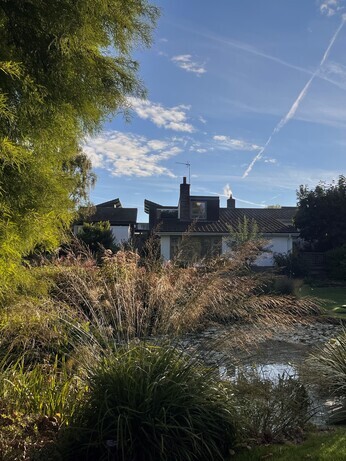
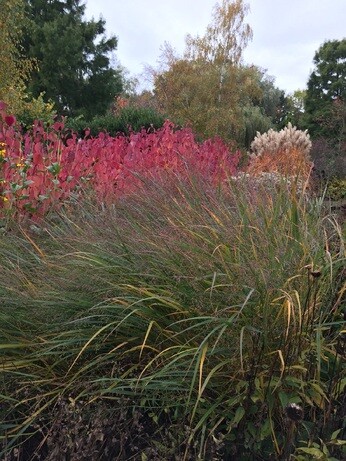
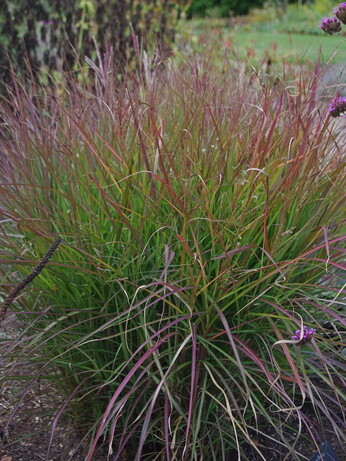
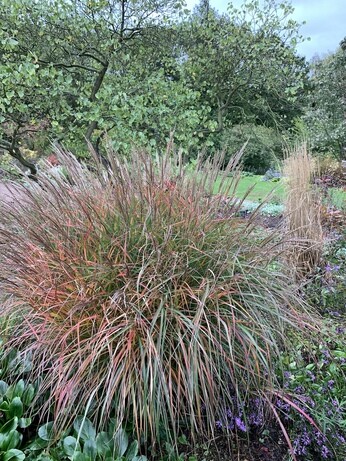
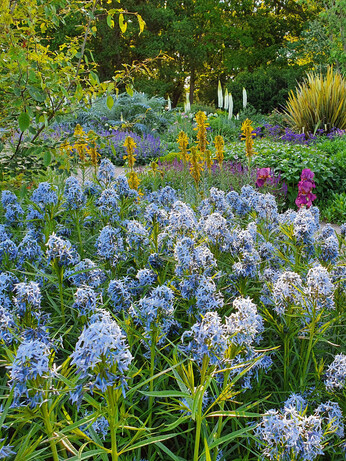
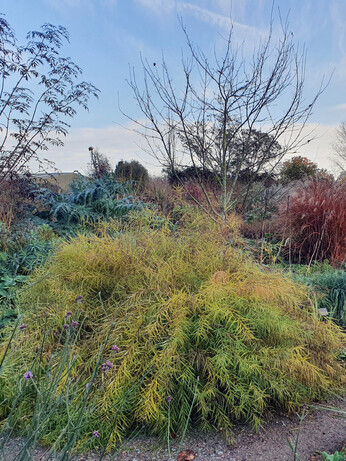
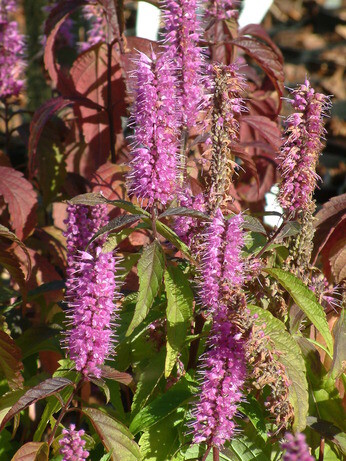
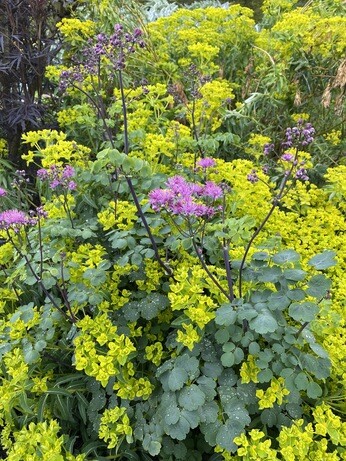
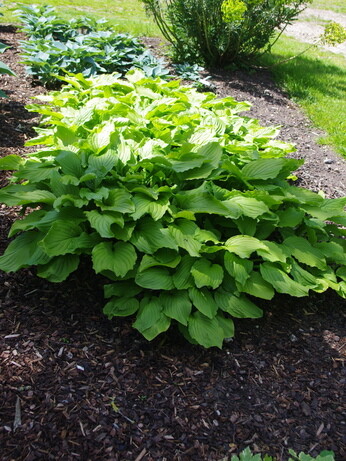
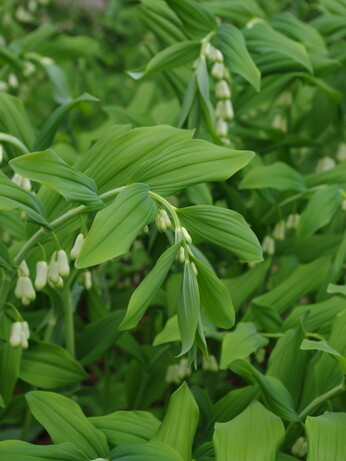
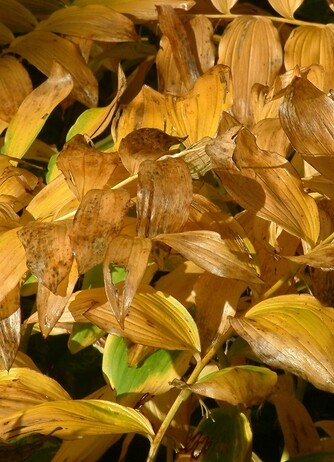
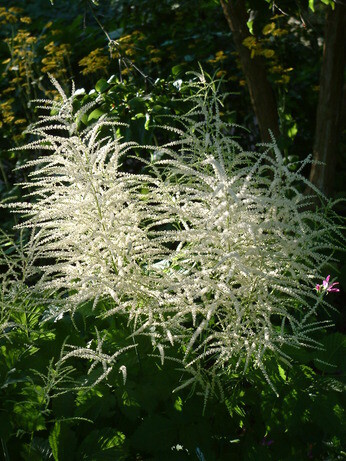
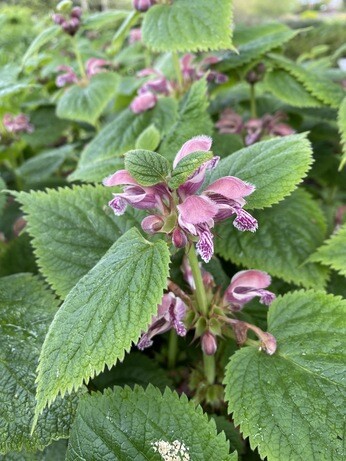
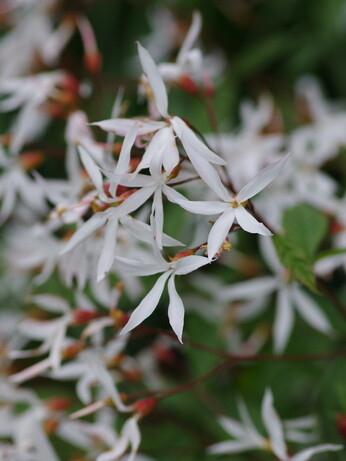
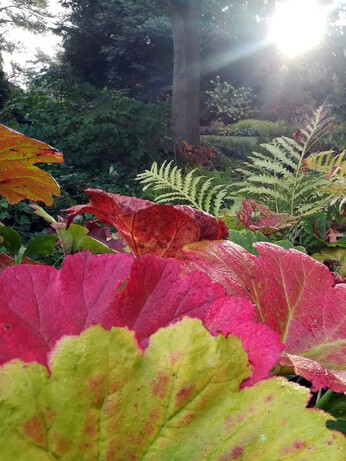
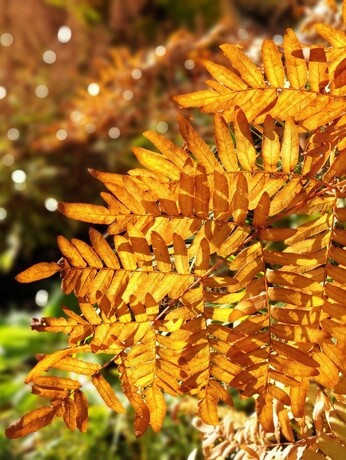
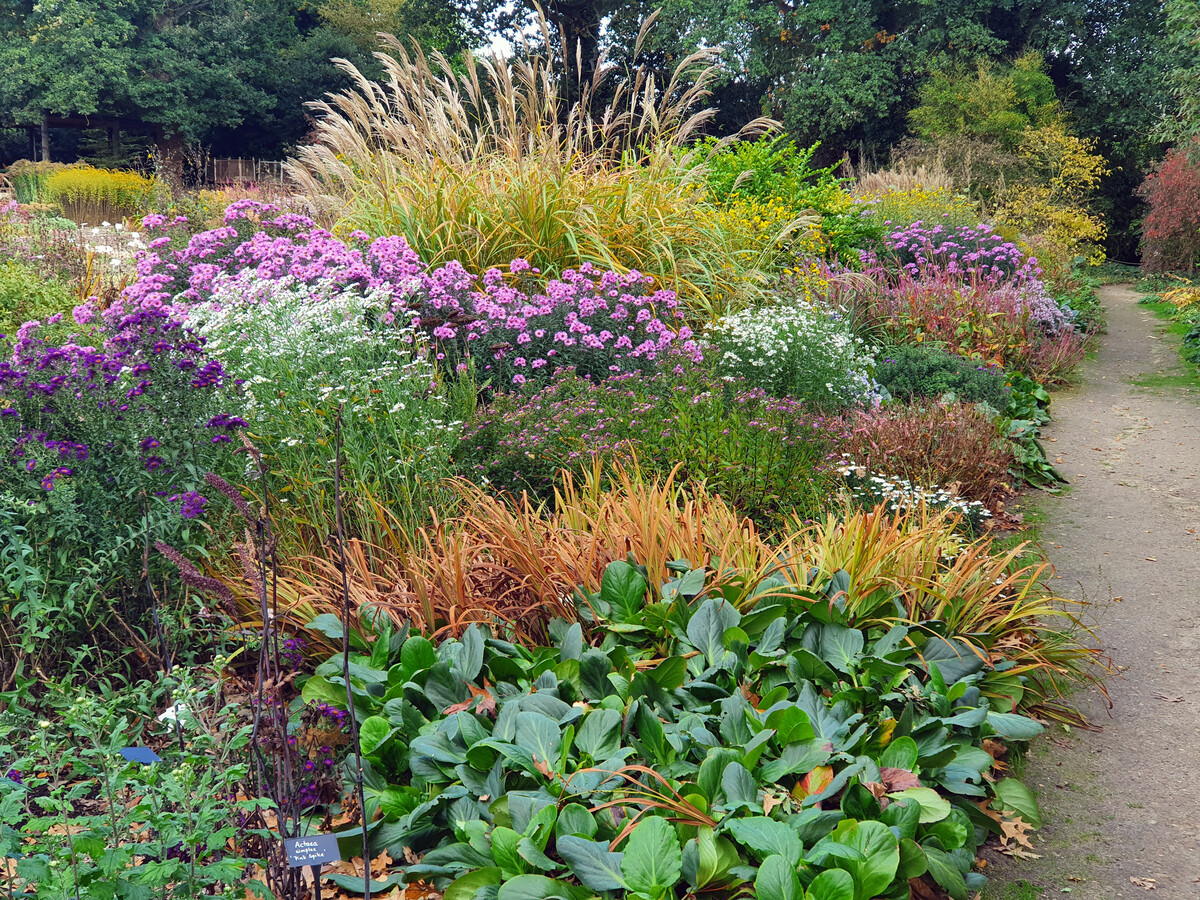
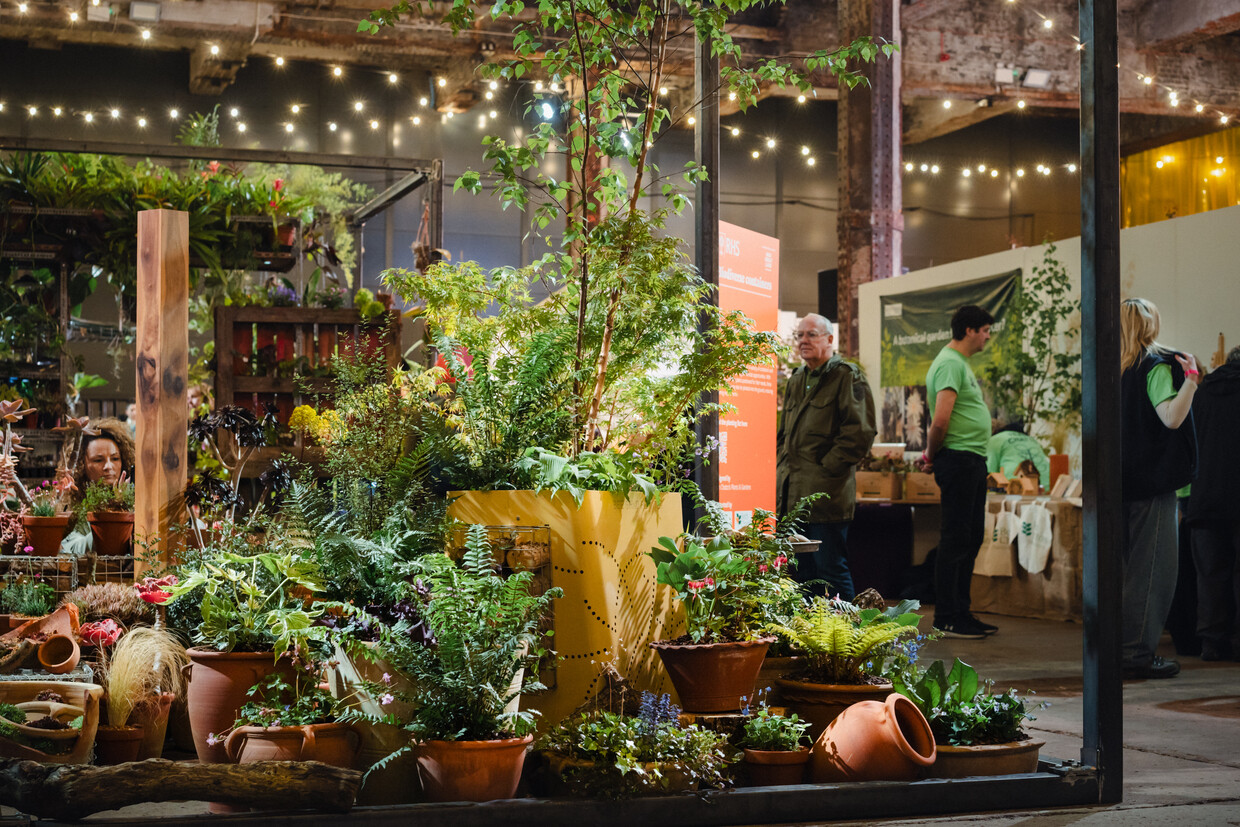

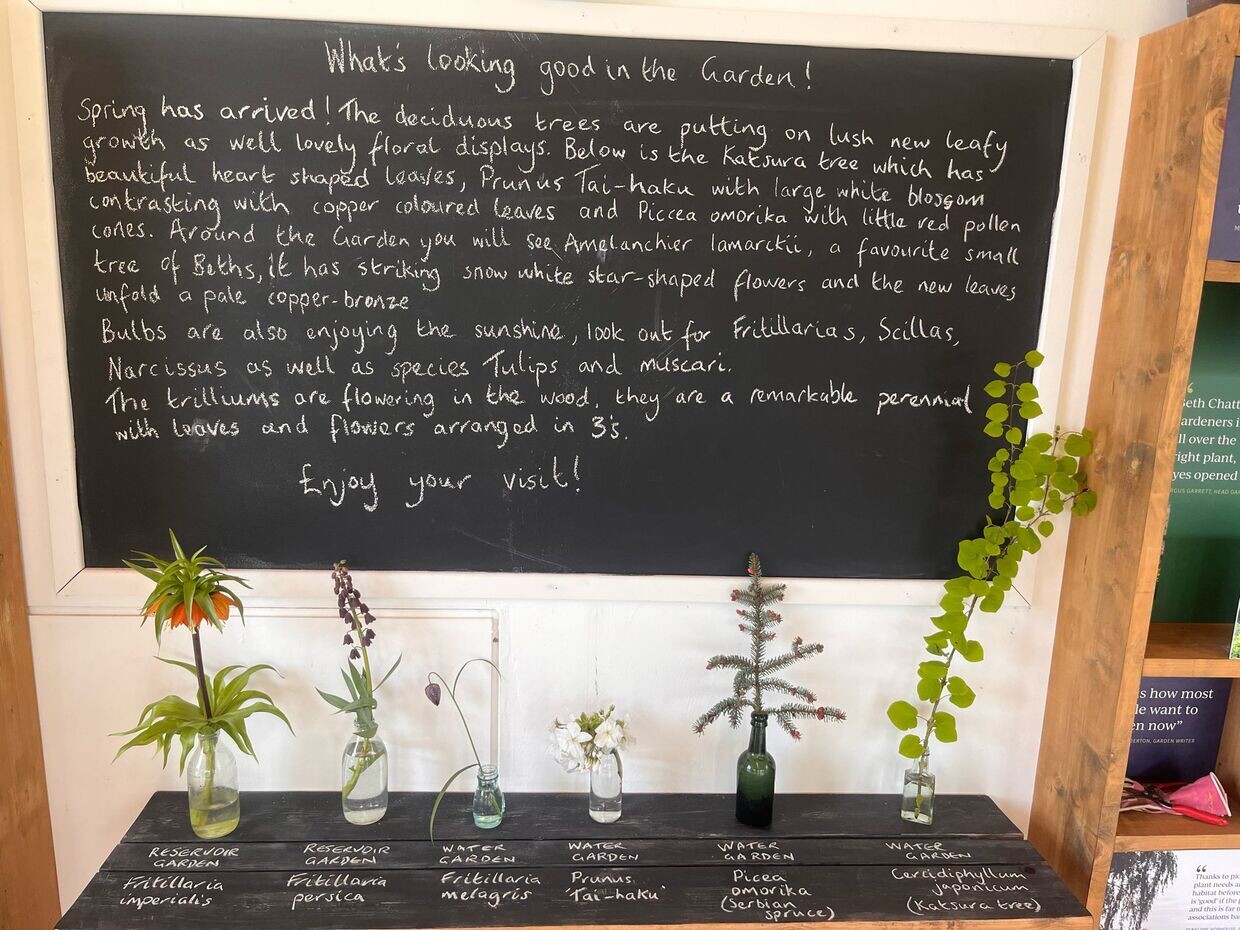
Comments (2)